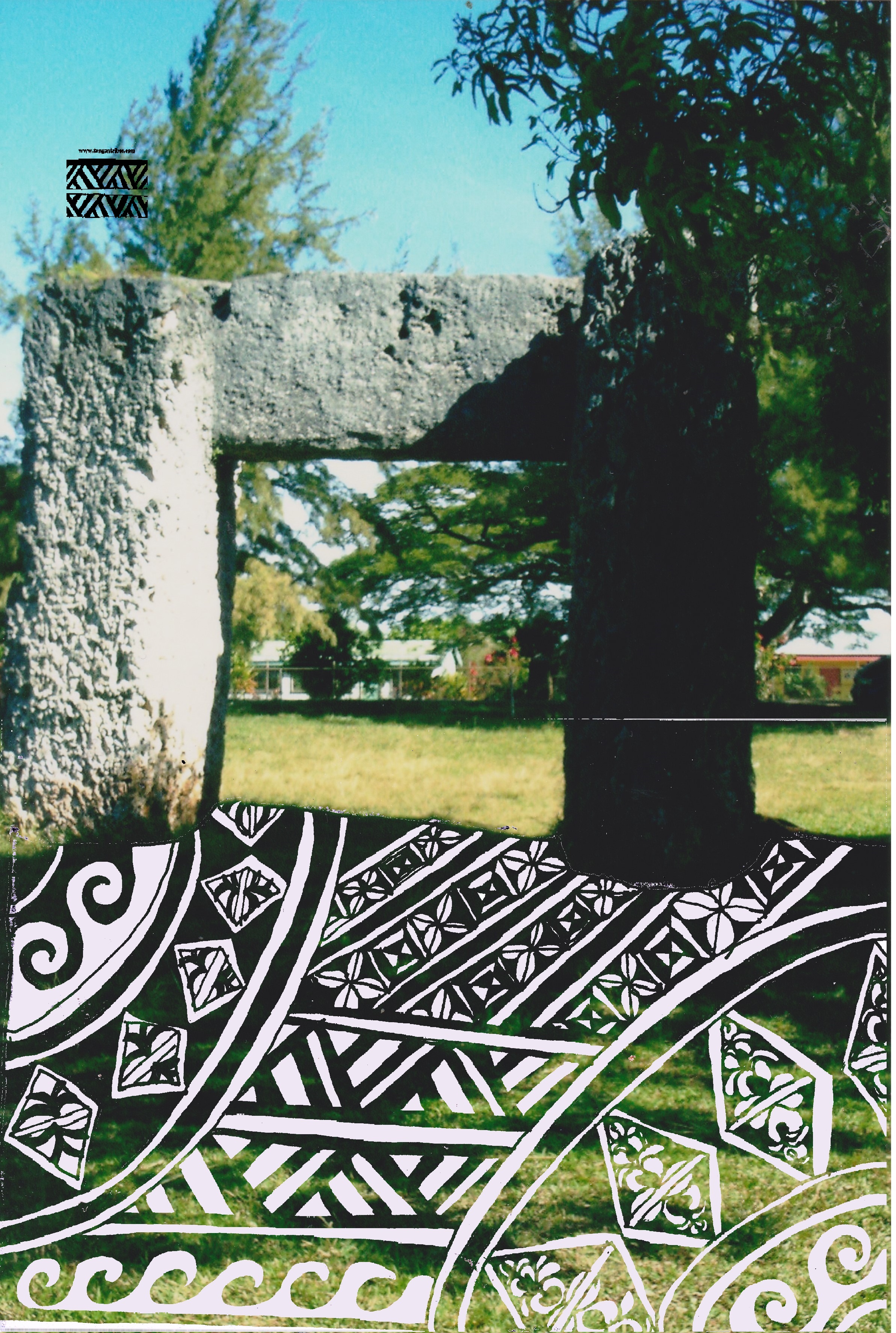Discovering the Tongan Stonehenge:
Ha’amonga ‘a Maui
By Richard J Bell
Standing in awe of the ancient Tongan Stonehenge, the Ha’amonga ‘a Maui, makes me wonder about old Tongan society. Wind blew through the curls of my hair as I was fascinated by how this old stone trilithon, of two upright stones and a third across the top as a lintel, was made and how they used the position of the stars. It is a mystery, locked within the secrets of the South Pacific’s own Stonehenge.
Stepping back, I looked at the stone structure, wanting to know how it was built.
Staring through the gateway between the pillars, I saw flat television screen come up out of the grass, framed in wooden Polynesian tribal designs. The screen flickered on, and I was seeing a memory of my computer and hands typing.
Watching that memory on the screen, I typed into Google the words Ha’amonga ‘a Maui.
The eyes scanned the document, which spoke of the myths of Maui, the demi-god who alone had built the ancient stone structure. He existed in all of Polynesia and made this Stonehenge by hand. He brought the individual stones from ‘Uvea (Wallis Island) and constructed the Ha’amonga ‘a Maui.
The document stated that the word Ha’amonga ‘a Maui translates into Burden of Maui. The word Ha’amonga translates into load or burden carried on shoulder sticks. Each stone is approximately 30-40 tonnes, and the demi-god emerged from the ocean carrying them on his shoulders.
The tribal framed television sunk back into the grass. I noticed the background clouds had changed to a sunset, a nice blend of reds and pinks highlighting the sky.
Touching the grey stone, I was amazed how its structure resembled the better-known Stonehenge in England. When I was twelve I wondered if ancient Tongan people knew how to read stars and what they knew of astronomy?
After sunset I saw the stars of the Milky Way begin to emerge from the darkening sky. Seeing the constellation of Orion, I decided to sit back and enjoy and finding a spot on the grass, I looked into the dark starry night.
Then the wooden tribal screen popped out of the grass again just near my feet, with the accompaniment of Polynesian choir sounds mixed with drums beating.
The screen flickered on to show the day I found out about the Polynesian astronomer Tevita H. Fale. I was researching how the Ha’amonga ‘a Maui related to the constellation western society calls Orion and Tongans called the Ha’amonga. I learnt that using this constellation, the ancient Tongans could tell north, south, east and west. Also, the stone structure of the Ha’amonga ‘a Maui lined up with the very same stars as modern day Orion. I was amazed by my newly discovered appreciation of Tongan astronomy.
The winds of ancient Polynesia sent goosebumps over my skin as the television faded and sunk back into the ground as I sat under the starlight, looking at the Ha’amonga ‘a Maui. Feeling even more fascinated by learning about the ancient Polynesian Stonehenge trilithon, I now appreciated the civilisation of old Tonga more.
Copyright © Richard J Bell 24th June 2020

